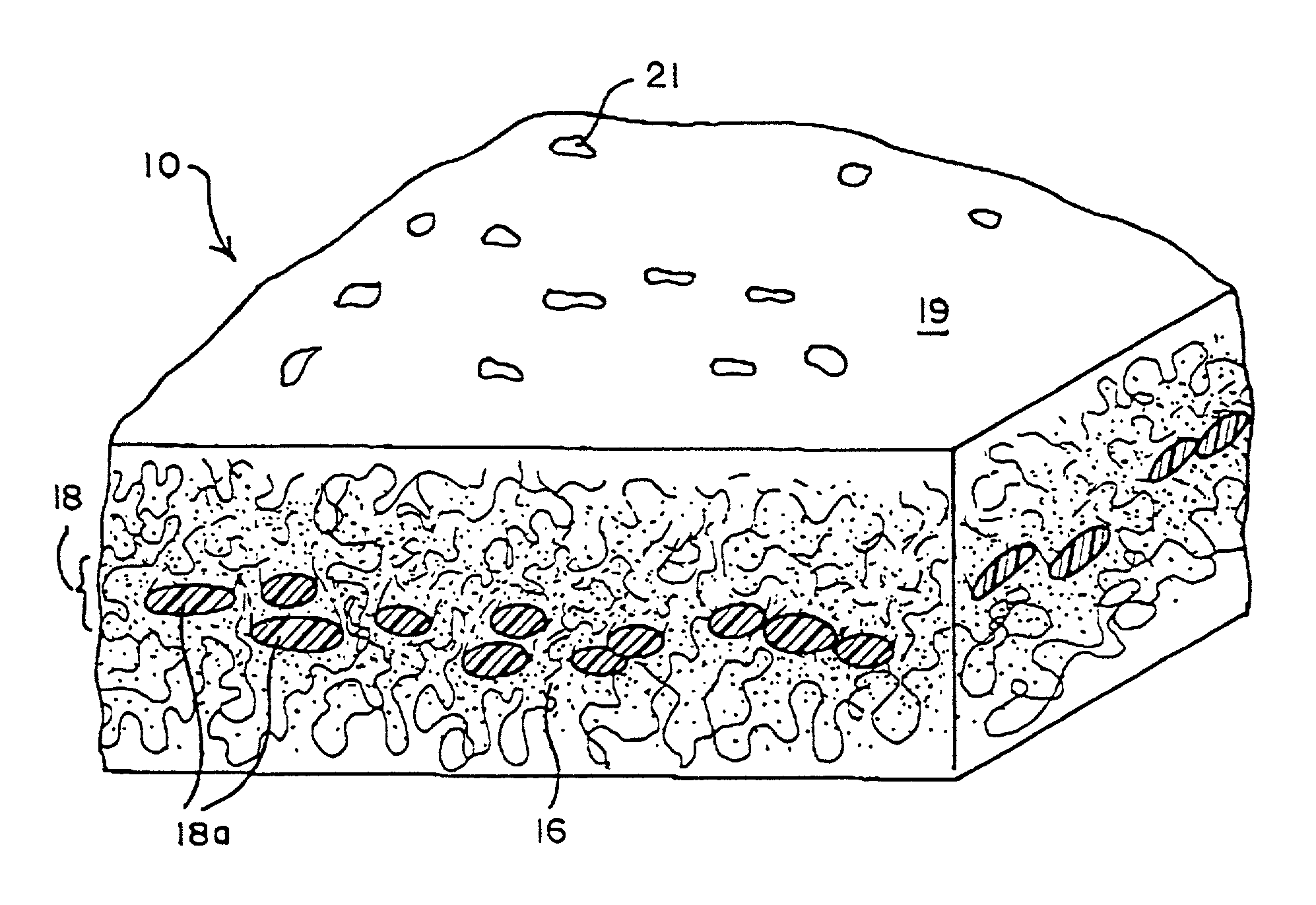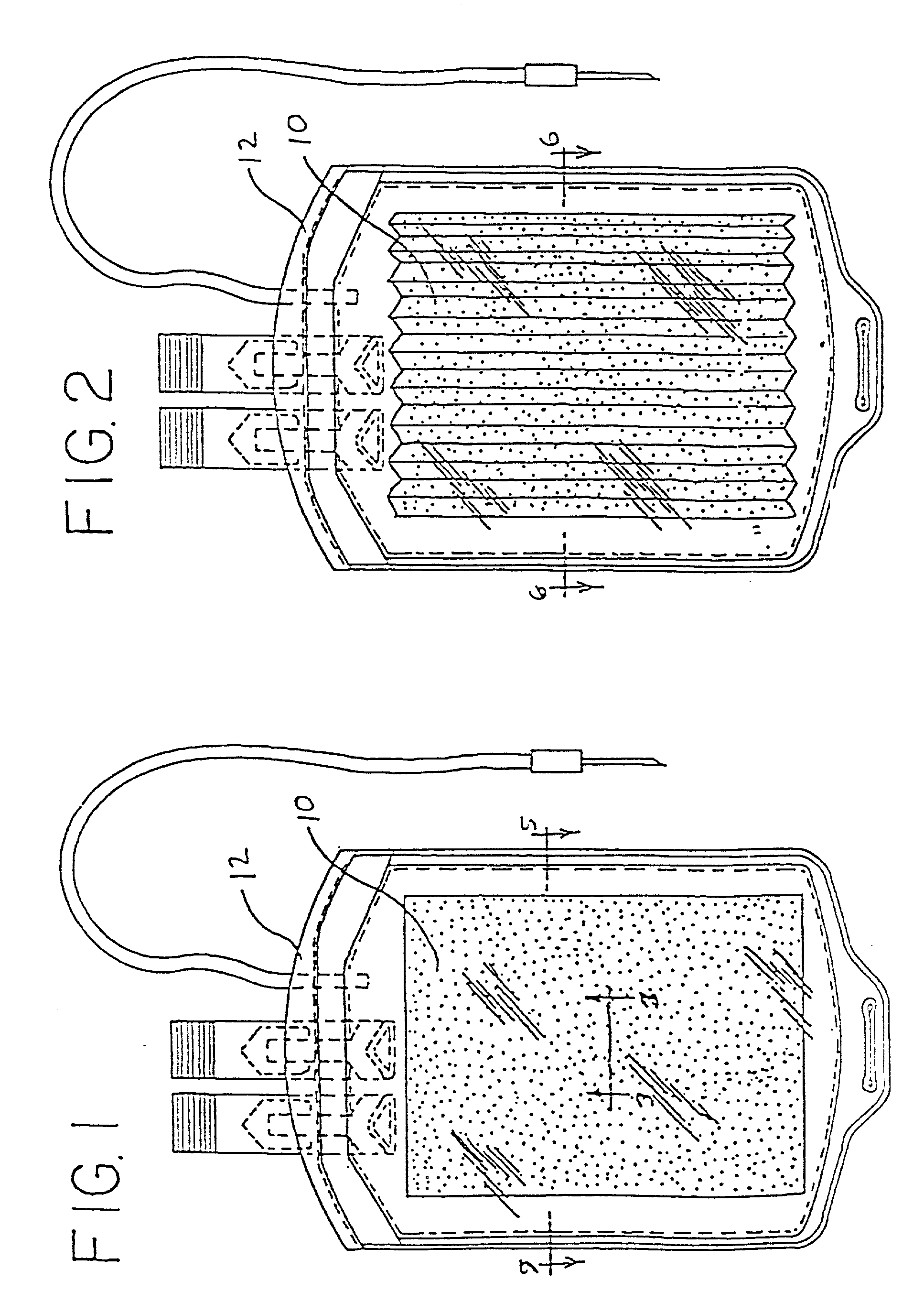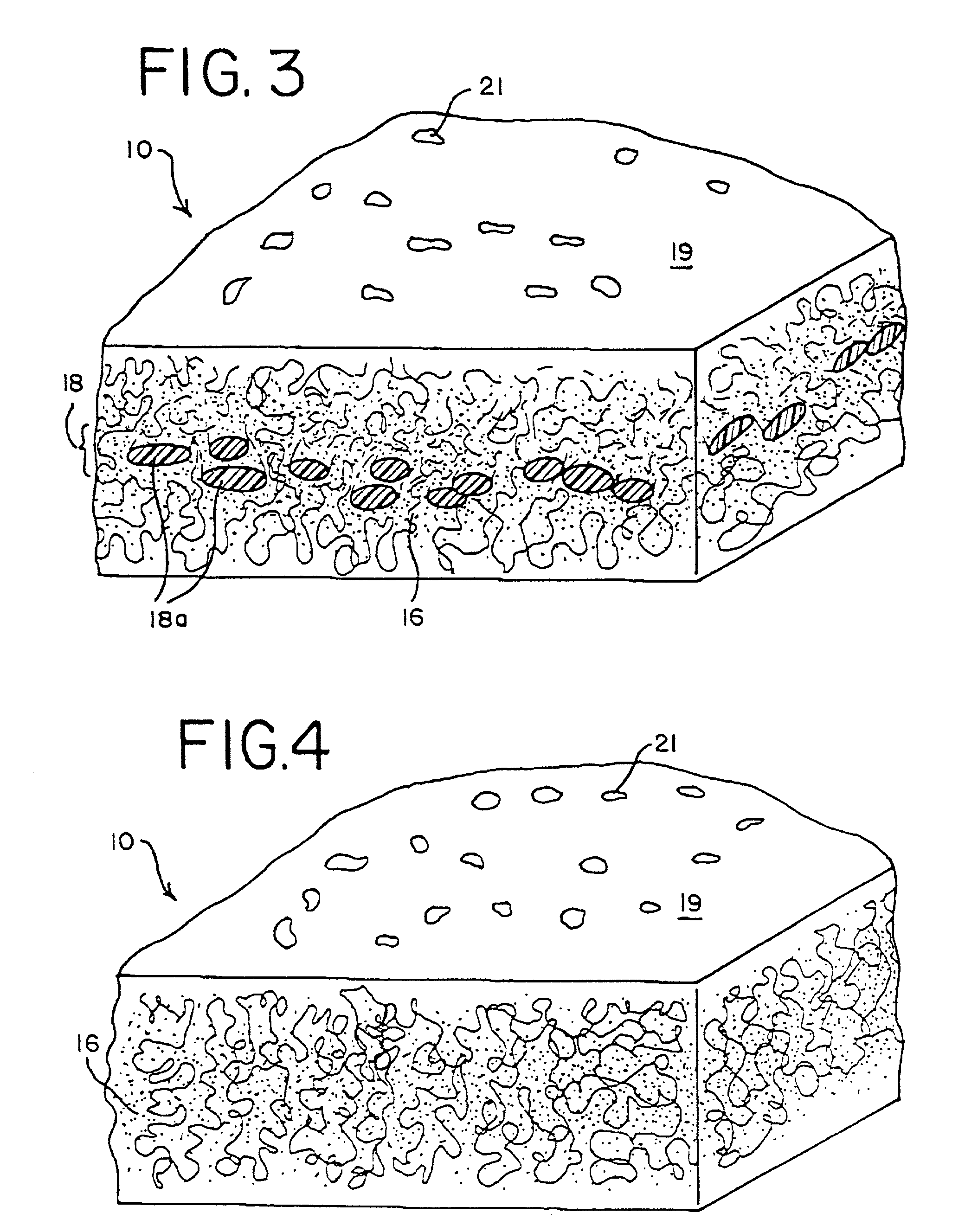Composite membranes and methods for making such membranes
a composite membrane and membrane technology, applied in the field of flexible composite membranes, can solve the problems of posing the risk of infection and disease not only to the hos
- Summary
- Abstract
- Description
- Claims
- Application Information
AI Technical Summary
Benefits of technology
Problems solved by technology
Method used
Image
Examples
example 2
[0083] A solution containing 6 mM reduced L-glutathione in phosphate buffered saline was prepared and distributed into test tubes. Samples of the membranes prepared as described above were placed in each test tube. The ratio of membrane surface to fluid was approximately 2.0 cm.sup.2 / ml. Samples were then taken from the test tubes at timed intervals and the degree of sorption was determined by high performance liquid chromatography (HPLC). The results are shown in FIG. 25.
example 3
[0084] A membrane, having a 70% loading of activated charcoal in a 10% polyurethane (PNO3) solution was prepared as substantially described above. The membrane was cut into two 22.7.times.10.7 cm.sup.2 sheets and placed inside of two separate 1 liter blood bags. Two units (approximately 300 ml each) of packed RBC were prepared by standard blood banking procedures and the acridine derivative (5-[.beta.-carboxyethyl) amino} acridine (abbreviated as AD) of Example 3 and L-glutathione were added to each of the units. The starting concentrations of the acridine derivative and L-glutathione were measured and are reported below in Table 1 below (Time 0). Each unit of packed RBC was transferred to a container, including the sample membrane (described above). The ratio of membrane surface to fluid was approximately 2.5 cm.sup.2 / ml The containers were placed on a orbital shaker and agitated at room temperature. Samples were removed at 1, 4 and 24 hours for analysis. The packed RBC samples wer...
example 4
[0086] The ability of five (5) different membranes, all made in accordance with the present invention, to remove pathogen inactivating treating agents from packed red blood cells was also evaluated. The membranes evaluated included a 70% loading of activated charcoal in a 10% polyurethane (PNO3) solution (as defined above). The sample membranes were, in some cases (e.g., test articles 2-5), treated with a treating agent and configured (flat or rippled) as set forth below. For comparison, test article 6 (a control) was a container of packed and treated (as described below) RBCs that included no sorbent whatsoever.
2TABLE 2: SAMPLE MEMBRANES Test Membrane Article Treatment & Configuration 1 No treatment & dried, flat 2 0.9% NaCl & dried, flat 3 0.9% NaCl & dried, rippled 4 0.25% PVOH & dried, flat 5 0.25% PVOH & dried, rippled 6 No sorbent (control)
[0087] Seven units of ABO matched whole blood were obtained. Each unit was centrifuged at 5,000 .times.G for five minutes in a Sorval RC-3B...
PUM
| Property | Measurement | Unit |
|---|---|---|
| Fraction | aaaaa | aaaaa |
| Fraction | aaaaa | aaaaa |
| Fraction | aaaaa | aaaaa |
Abstract
Description
Claims
Application Information
 Login to View More
Login to View More - R&D
- Intellectual Property
- Life Sciences
- Materials
- Tech Scout
- Unparalleled Data Quality
- Higher Quality Content
- 60% Fewer Hallucinations
Browse by: Latest US Patents, China's latest patents, Technical Efficacy Thesaurus, Application Domain, Technology Topic, Popular Technical Reports.
© 2025 PatSnap. All rights reserved.Legal|Privacy policy|Modern Slavery Act Transparency Statement|Sitemap|About US| Contact US: help@patsnap.com



